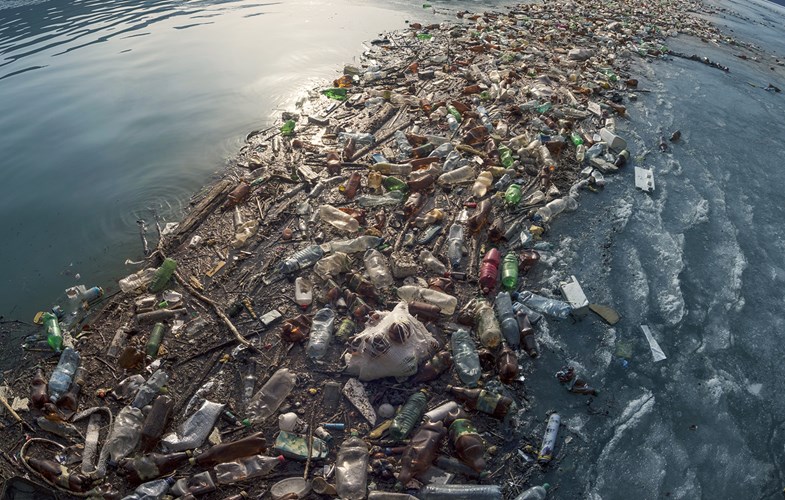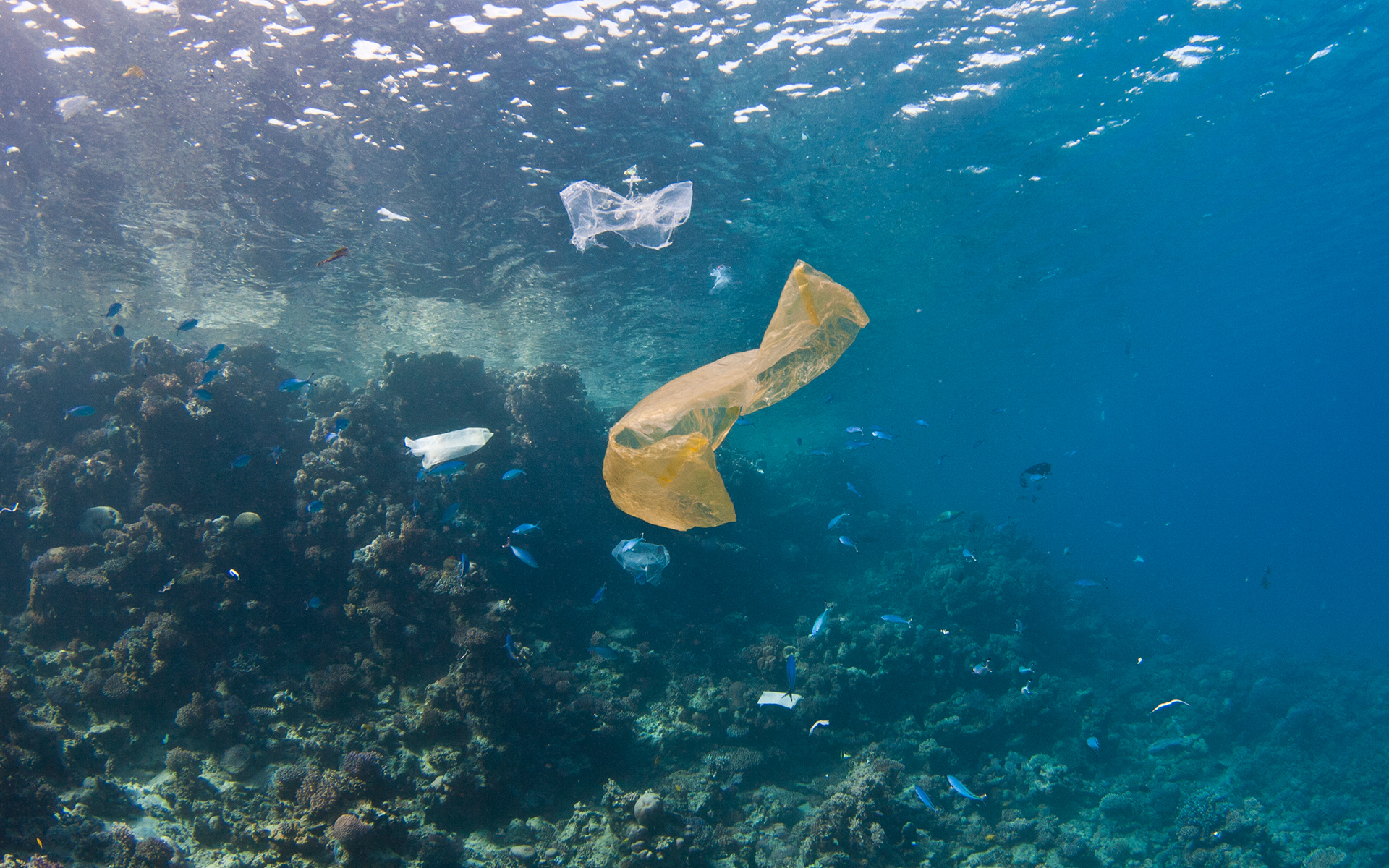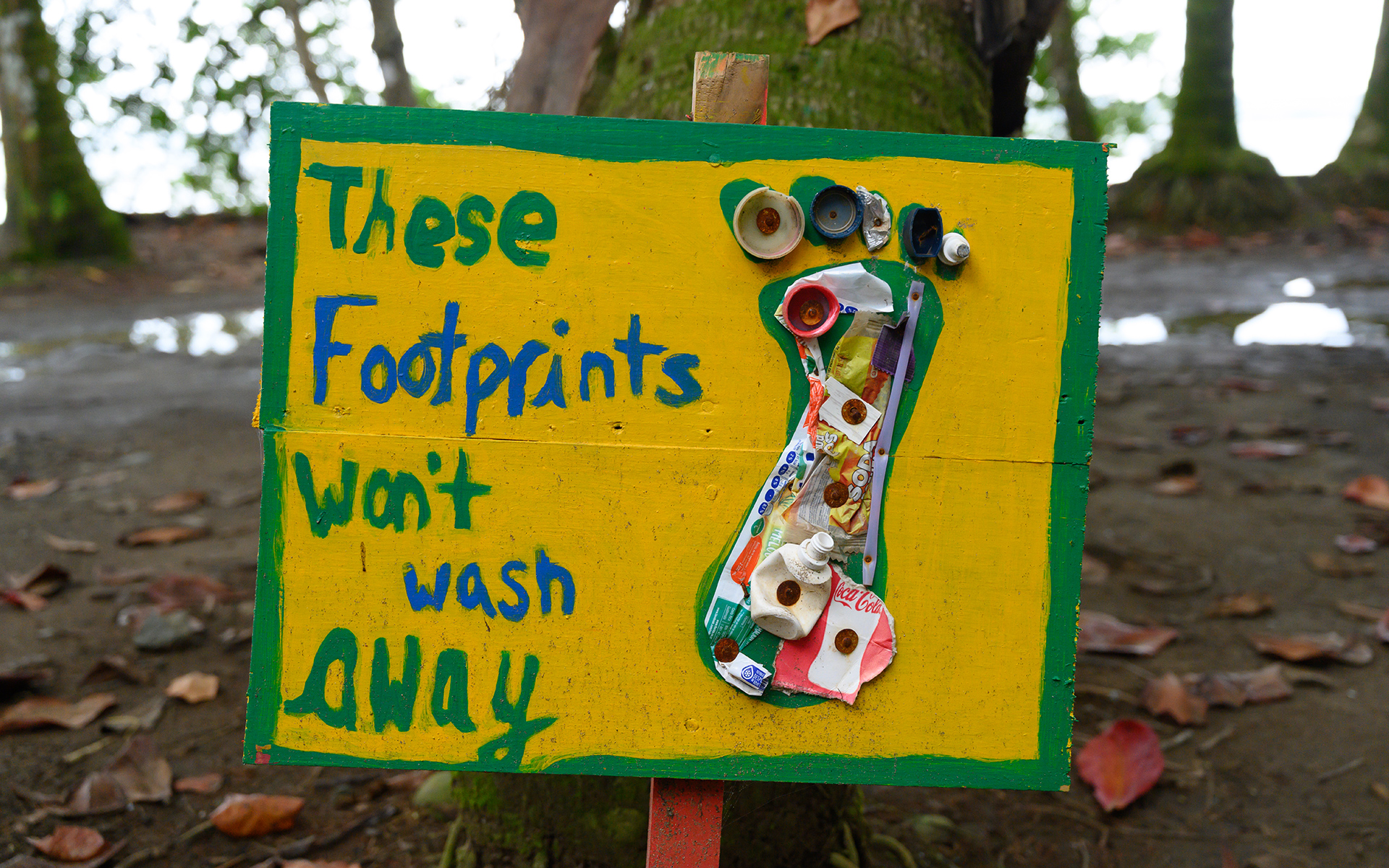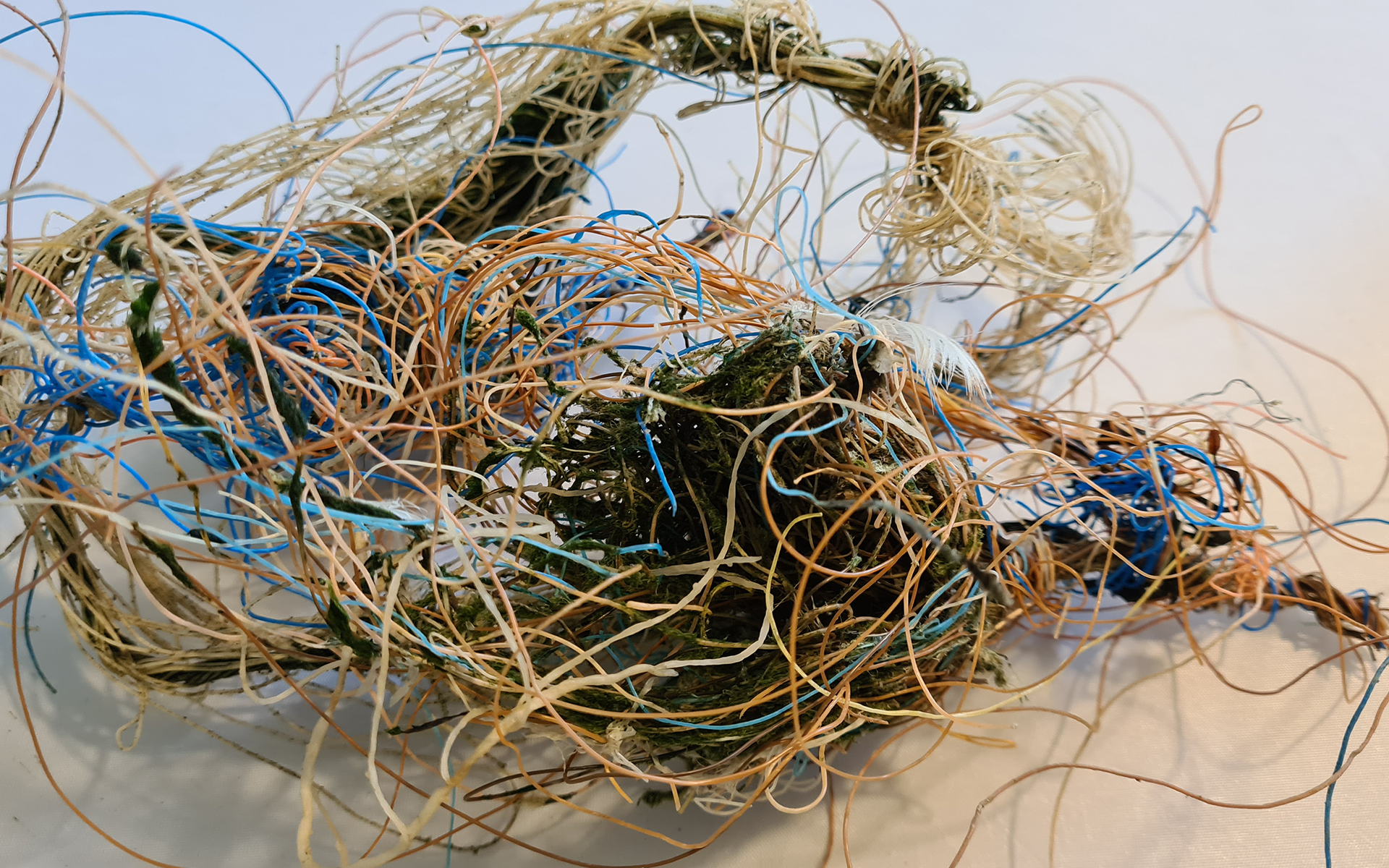

We live in a world full of plastic, maybe even in a whole new era - the Plastocene. The problem? We can no longer get rid of these enormous quantities of plastic.
Plastic Free Oceans – Welcome to the Plastocene
Plastic does break down, but depending on the type this can take many centuries (or maybe even longer, we simply don’t know yet). But watch out -- plastic never disappears completely, it “just” disintegrates into so-called “microplastics”. Microplastics are tiny particles, many visible only under a microscope, which ultimately end up in our rivers, lakes, and oceans. But the microplastics don't simply stay there; they find their way back to us.
The mass of plastic in our ocean already weighs as much as a fifth of all fish there. By 2050, it’s estimated that plastic (including microplastic) will in fact outweigh the fish! Our beloved Mediterranean is particularly badly affected; this sea is surrounded by many countries, making it especially vulnerable to improperly disposed-of plastic waste (Devriese et al., 2015, Walkinshaw et al., 2020).
But the Mediterranean is not the only area suffering: in many parts of the ocean there are already six times more plastic than plankton. These tiniest particles have been working their way up the food chain back to us for a while now. According to scientific studies2, microplastic has been found in many widely-consumed fish and shellfish, like mussels, carp, crabs and shrimp.
The true scale of the problem is visible in the form of several “trash vortices” polluting our oceans3, kept in motion by wind and the Earth’s rotation. The “Great Pacific Garbage Patch”, a giant debris-laden area north of Hawaii, is already 4.5 times as large as Germany! However, a far greater mass of plastic sinks to the ocean floor -- only 30% of the plastic found in the ocean floats on the surface. The remaining 70% is denser than water, sinks into the depths, and causes immense harm to the marine ecosystem and its inhabitants there, even though it’s no longer visible to us.

© Christine Gstöttner

© Denise Smolinsky

© Christine Peters
What is plastic really?
Plastic is an umbrella term for a variety of synthetic materials. It consists of multiple chemical building blocks, which can be combined in a variety of ways to produce different end products5. That’s why plastic is sometimes soft, sometimes hard, sometimes colorless and sometimes brightly colored. The following materials all considered plastic:
- Acrylate Copolymer (AC)
- Acrylate Crosspolymer (ACS)
- Dimethiconol
- Methicone
- Nylon-6
- Nylon-12
- Polyacrylate (PA)
- Polyethylene (PE)
- Polyethylene Glycol (PEG)
- Polyethylene Terephthalate (PET)
- Polymethyl Methacrylate (PMMA)
- Poypropylene (PP)
- Polypropylene Glycol (PPG)
- Polyquaternium (PQ)
- Polystyrene (PS)
- Polyurethane (PUR)
- Siloxane
- Silsequioxane
Tip: It’s simple. As soon as you see words containing ‘Poly’, ‘Acrylate’, or ‘Nylon’, that means there’s plastic. Polyethylene (PE) and Polyethylene Terephthalate (PET) are the most common types.
Did you know that…
Microplastics have been found in sharks?
According to a study from England (Parton et al., 2020), microplastics and other environmental contaminants have been detected in four different shark species, including the well-known nursehound. This shark is primarily eaten in England and France, in addition to being processed into fish meal. Bon Appetit!
Microplastics have been found in humans?
A 2018 Viennese study detected microplastics in human stool for the first time. The study participants ate primarily plastic-packaged food for a week. But that’s not all - an Italian study (Ragusa et al., 2021) confirmed that microplastics have been found in the human placenta! How the microplastics got there is still unknown.
Microplastics really are everywhere?
Not to fear-monger, but microplastics are literally found everywhere. These tiny particles have been discovered on the seafloor and on the water surface, in every ocean and sea, as well as in fresh and brackish waters. Newer studies have even confirmed the accumulation of microplastics in both Arctic and Antarctic ice (Auta et al., 2017). They’ve even been found in terrestrial ecosystems, in the soil “on land” (He et al., 2020), and have recently been detected in the air. These so-called ‘airborne microplastics’ can present a considerable health risk (Prata et al., 2020).
Plastic in numbers
- 7 million disposable coffee-to-go cups are consumed in Germany every day. 2.5 billion cups per year!
- 365 coffee-to-go cups per person and a year are consumed in Switzerland. 2.92 billion cups per year. This makes Switzerland the European champion per person.
- 40 million plastic bags cross the counter in Germany every day. Almost 1.5 billion (rubbish) bags per year!
- 4,000 tonnes of plastic waste per year are caused by coffee capsules in Germany alone. 11 tonnes every day. The empty weight of a capsule is on average 2 grams.
- In a recent representative survey by the consumer advice centre of North Rhine-Westphalia, 90% of consumers voted for less plastic packaging in supermarkets and for unpackaged fruit and vegetables (9/2018).
- In 2016, Germans generated 38 kg of plastic packaging waste per person.
- It is estimated that 86 million tonnes of plastic waste has now ended up in the sea, of which about 300,000 tonnes float on the ocean surface.
- Europe exports plastic waste; according to estimates (year 2018), Germany exported around 740,000 tonnes of waste abroad, with Malaysia being the No. 1 buyer country.
Become a role model
For a sensible use of plastic and a balanced ecosystem, a rethink is necessary: The good thing is: We have it in our hands because we, the consumers, can change our use of plastic and thus reduce the ever-growing plastic waste ourselves. We can also give industry the impetus to develop ecological alternatives and bring them to market by doing without plastic products.
And most importantly, don't meet the ignorance and disinterest of others with the same attitude! Get involved. Remove plastic waste. Dispose properly. Consciously consume! The best thing you can do is to be a role model yourself.
Responsible use of plastic means:
- Protecting (marine) ecosystems
- Conserving resources
- Reducing the world's mountains of rubbish
- Protecting personal health
It is hard to keep track of the issue because it is a complex one. But every individual can make a contribution. It is not a question of how much, but of taking the first step at all. We have a small collection of tips and tricks on how you can reduce your own ecological footprint step by step.
Freely according to the motto:
Reduce, Reuse, Recycle.
Find out more
Want to learn more about microplastics but don't feel like digging through various scientific publications? Then check out these films:
- Plastic Planet
An Austrian documentary about the problem of plastic per se, how it is produced and sold and what life would be like without plastic. After this film you might never drink from plastic bottles again! Available on Amazon. - For those of you who like to watch films in English, here are several excellent documentaries that take a closer look at the issue of plastic and its impact on the environment. Probably the best known film is "A Plastic Ocean" and is really recommendable.
- The somewhat shocking documentary Seaspiracy is mainly about (illegal) fishing, but also mentions the problems of plastic waste in the ocean. Watch it on Netflix.
If you like listening to podcasts, you shouldn't miss the Plastisphere Podcast. Here you can always hear new things about this topic, as well as discussion and suggestions on how to deal with it better.
Interactive!
Code Check - an app that shows (questionable) nutrients and ingredients via barcode scan. A shopping guide for your pocket: www.codecheck.info
With the app from beatthemicrobead.org you can identify products with microplastics. You can also use the website to write directly to manufacturers who still have microplastics in their products.
Küste gegen Plastik e.V. has developed the Replace Plastic App in order to forward consumer requests for alternatives to plastic products to the industry.
Shopping guides, such as the one from Greenpeace, help to keep track of things on the go.
The BUND shopping guide "Microplastics - The invisible danger".
The GEOMAR Helmholtz Centre for Ocean Research Kiel has published a compact flyer on the topic of "Plastic waste in the sea - questions and answers", which can also be ordered there.
Become a water rescuer! Report litter. Organise a clean-up. Remove litter and recycle correctly. Do good and talk about it! At the click of a mouse.
Download the app "Marine Debris Tracker" and make a big scientific contribution to tracking and tracing plastic waste. Simply take a photo of the (plastic) waste you find, enter the location where you found it and upload the data to the app - it's super easy and you'll be helping science to identify misdirected waste and put an end to this problem.
Tips for everyday life when dealing with plastic
FOR BEGINNERS
- Rethink consumption. Not spartan renunciation, but smart use of resources. What is really necessary? Seeing old things with new eyes
- Storage jars instead of plastic cans, glass bottles and jars for ketchup, mustard, etc., reusable glass instead of plastic for milk, juices or yoghurt.
- Q-tips (cotton swabs) made of paper and organic cotton
- Reusable bottles instead of disposable PET bottles
- Shopping basket or bag instead of disposable plastic bag
- Vegetable nets and bread bags instead of plastic bags
- Bamboo and wooden dishes instead of disposable plastic dishes
- Washing-up brushes made of wood and natural fibres instead of plastic brushes
- Stainless steel, glass, paper or bamboo straws instead of plastic ones
- Stainless steel boxes and bottles for on the go instead of PET & Co.
- Look for recycled products! Toilet paper, notepads, handkerchiefs, envelopes etc. are now available made of recycled paper.
- Always keep bags, pouches and nets handy in the car or bicycle basket!
- Active in everyday life. Pick up a carelessly discarded piece of plastic every day and dispose of it properly. Also a game for children.
FOR CONVERSIONISTS
- Use plastic intelligently. Look for reusability and long-lasting uses. Consider other possible uses before disposing of it (and increasing the amount of waste). Keyword: Lifehack.
- Buy unpacked fruit and vegetables - here is a collection of links to various shops.
- Dispenser box instead of foil-wrapped handkerchiefs
Soap bar in a carton instead of liquid soap in a bag - Buy cosmetics and drugstore articles without microplastics - e.g. Lush Cosmetics
- Bring your own Coffee-To-Go cup (e.g. made of bamboo)
- Avoid double- and triple-packed articles (often sweets).
- Buy organic detergents, cleaning products, washing-up liquid etc. - e.g. Waschbär
- Buy recycled products (e.g. dishwashing sponges, cotton kitchen towels) instead of conventional ones
- Consume tap water, use a bubble maker (e.g. Soda Club) for carbonated water lovers.
- Use bamboo toothbrushes with bristles made from renewable raw materials instead of plastic.
FOR UP-AND-COMMERS
- Household vinegar instead of fabric softener (don't worry, the vinegar smell will fade).
- Washing soda instead of toilet cleaner
- Cloth nappies instead of disposable nappies
- Oil and toilet paper instead of wet wipes
- Subscriptions to magazines digitally instead of in print, daily newspapers digitally instead of on paper
- Reusable oilcloth instead of aluminium foil or cling film
- Have unpacked goods filled in their own containers
- Furniture made of sustainable wood. No cheap furniture, but also no furniture from over-exploitation of virgin forests.
- When buying clothes, look for non-synthetic products - when washed, micro(plastic) fibres enter the water cycle!
- Buy clothes and articles made from recycled marine waste (e.g. at www.bureo.co, www.ecoalf.com, www.karunworld.com, www.woodlikeocean.com).
- Buy washing bags for washing machines (e.g. from OceanCare) or install microplastic filters for washing machines.
Sources
General
ELLEN MACARTHUR FOUNDATION – Rethinking the future of Plastics, 2016.
The New Plastics Economy Rethinking the future of plastics, WORLD ECONOMIC FORUM, 2016.
MARINE PLASTIC DEBRIS AND MICROPLASTICS – Global lessons and research to inspire action and guide policy change, UNEP 2016.
www.reset.org Digital for Good
Gonstalla Esther, Das Ozean Buch, 2017, 2. Auflage
Plastikatlas 2019 (bund.net)
Plastik im Kreislauf – Ausweg aus dem Plastozän? | Wirtschaft & Umwelt (ak-umwelt.at)
Garbage Patches | OR&R's Marine Debris Program (noaa.gov)
Unverpackt-Läden: Einkaufen ohne Verpackung - Utopia.de
Feuchtes Toilettenpapier selber machen - so geht's | FOCUS.de
Nachhaltige Möbel & Öko-Möbel: Shops & Anbieter | UTOPIA-Bestenliste
Studies
Auta, H. S., Emenike, C. U., & Fauziah, S. H. (2017). Distribution and importance of microplastics in the marine environmentA review of the sources, fate, effects, and potential solutions. Environment International, 102(March), 165–176. https://doi.org/10.1016/j.envint.2017.02.013
Devriese, L. I., van der Meulen, M. D., Maes, T., Bekaert, K., Paul-Pont, I., Frère, L., Robbens, J., & Vethaak, A. D. (2015). Microplastic contamination in brown shrimp (Crangon crangon, Linnaeus 1758) from coastal waters of the Southern North Sea and Channel area. Marine Pollution Bulletin, 98(1–2), 179–187. https://doi.org/10.1016/j.marpolbul.2015.06.051
Meng, Y., Kelly, F. J., & Wright, S. L. (2020). Advances and challenges of microplastic pollution in freshwater ecosystems: A UK perspective. Environmental Pollution, 256, 113445. https://doi.org/10.1016/j.envpol.2019.113445
Parton, K. J., Godley, B. J., Santillo, D., Tausif, M., Omeyer, L. C. M., & Galloway, T. S. (2020). Investigating the presence of microplastics in demersal sharks of the North-East Atlantic. Scientific Reports, 10(1), 1–11. https://doi.org/10.1038/s41598-020-68680-1
Prata, J. C., Castro, J. L., da Costa, J. P., Cerqueira, M., Duarte, A. C., & Rocha-Santos, T. (2020). Airborne Microplastics Concerns Over Public Health and Environmental Impacts. Handbook of Microplastics in the Environment. https://doi.org/10.1007/978-3-030-10618-8_37-1
Ragusa, A., Svelato, A., Santacroce, C., Catalano, P., Notarstefano, V., Carnevali, O., Papa, F., Rongioletti, M. C. A., Baiocco, F., Draghi, S., D’Amore, E., Rinaldo, D., Matta, M., & Giorgini, E. (2021). Plasticenta: First evidence of microplastics in human placenta. Environment International, 146, 106274. https://doi.org/10.1016/j.envint.2020.106274
Walkinshaw, C., Lindeque, P. K., Thompson, R., Tolhurst, T., & Cole, M. (2020). Microplastics and seafood: lower trophic organisms at highest risk of contamination. Ecotoxicology and Environmental Safety, 190(December 2019), 110066. https://doi.org/10.1016/j.ecoenv.2019.110066


